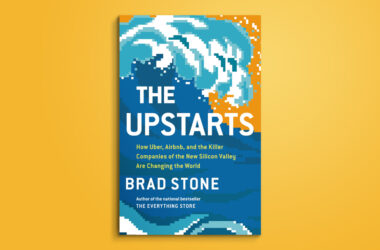The Aspirational Investor is a book by the Chief Investment Officer of Merrill Lynch that introduces a slightly different way to think about investments. It’s not looking to overturn how to think about investing; the author readily admits that index investing and modern portfolio theory (MPT) are valid and valuable ways to structure an investment portfolio. Rather, this book tries to augment that construct with a more encompassing structure, and suggests a more holistic way to categorize and think about all types of assets.
MPT is just a fancy term for structuring investments to blend and control risk with returns. The common—now standard—technique for portfolio construction is to diversify asset classes, so that when one or multiple asset types fall in value, others retain or even gain value. At the same time, when assets go up in value, the diversification does make gains less pronounced than if they were concentrated in a single asset type, but the balancing works out to more upside than downside, such that it’s always worth spreading out portfolio asset types. In practice, what this commonly looks like is something like “60% equities/40% bonds,” with ratios adjusted to fit the investor’s risk profile.
As you can guess, the widespread application of this financial strategy gave way to commoditization and drove down costs1, which then led to automation in the form of robo-advisors that implement this functionality as a software service. In particular, most people would encounter this as a part of their employer-sponsored retirement accounts; in the US, this is the 401(k). This combination of a semi-autonomous account and a long-lived investment vehicle with a targeted retirement date turns out be a great instance of applying MPT, with risk tolerance decreasing over time—i.e., the portfolio rebalances away from equities and more towards bonds—as the worker creeps closer to retirement age.
Anyway, The Aspirational Investor does go over this aspect of money management, but then points out the critical gap: this construction is appropriate for handling equities and bonds, but doesn’t fully address other asset types: real estate, hedge funds, human capital, etc. There’s also the problem that even though most money managers wouldn’t be able to beat the market reliably and sustainably, there are a couple of well-known ones that do have a track record—Warren Buffett, and the Yale endowment fund. After all, it’s this pursuit of market-beating returns2 that gives hope to all the stock market day-traders.
The solution proposed in the book is to think about take all assets and divide them into 3 buckets:
- The Safety bucket is all about safe investments, assets you can rely on on a rainy day, and serves as the safety net for everything else;
- The Market bucket is pegged to market-level returns and should be expected to follow general economic market behaviors, going up and down as the economy expands and contracts;
- The Aspirational bucket is where risky investments live, where you take on outsized risk in hopes for outsized returns.
This setup is itself a bit of a diversification in that it’s not designed to concentrate assets into any one bucket, but it allows an investor to think about how much they need to sustain their lifestyles and life goals first, and then allocate excess capital towards riskier assets after filling up the more foundational buckets. It harkens to the classic Maslow hierarchy of needs; aspirations and big risks should only be pursued after core needs are met. It also gives an interesting framework to think about assets as they relate to the investor. For instance, someone’s human capital as a professional may be in their Safety bucket as it’s what lets them earn a steady living, but another’s human capital as a hopeful actor would be in their Aspirational bucket as that recognizes that role’s high risk & reward3.
I do like this more holistic framework of thinking about asset allocations and how to think about portfolio management. If there’s one complaint, it’s that many of the more esoteric categories of assets are only primarily available to high net-worth individuals or accredited investors, and aren’t exactly relatable to the average investor. Talking about finance and investments is still more opaque than it should be, and I appreciate that The Aspirational Investor tackles the subject with patient explanations and clear language, making the concepts accessible to a wide breath of readers even if the advice itself is less applicable.
In the form of lower advisor fees.↩
In finance lingo, expected market returns are called beta, and excess returns generated by managerial skill and timing is deemed alpha. If you’re actively trading stocks, you’re chasing alpha.↩
An established actor would again be different, categorizing their experience as Safety or Market.↩




